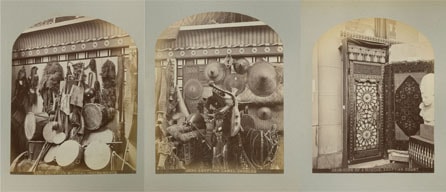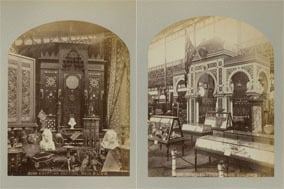How Did People Learn about the World before the World Wide Web?

A variety of Egyptian artifacts on display at the Centennial Exhibition in Philadelphia.

Centennial Exhibition, Philadelphia. 1876. (Philadelphia, 1876).
![Souvenir de L'Exposition Universelle 1878 (Paris, 1878). [Gift of Michael Zinman]](http://librarycompany.org/wp-content/uploads/p-2008-36-44-12-435x600.jpg)
Souvenir de L’Exposition Universelle 1878 (Paris, 1878). [Gift of Michael Zinman]
![Philadelphia. The birthplace of liberty. Official souvenir view book Sesqui-Centennial International Exposition (Philadelphia, 1926). [Gift of Michael Zinman]](http://librarycompany.org/wp-content/uploads/p-2008-36-50-12detail-800x510.jpg)
Philadelphia. The birthplace of liberty. Official souvenir view book Sesqui-Centennial International Exposition (Philadelphia, 1926). [Gift of Michael Zinman]
![Le cavalier Marocain (Paris, 1867) [Gift of Michael Zinman]](http://librarycompany.org/wp-content/uploads/p-2008-36-41-800x398.jpg)
Le cavalier Marocain (Paris, 1867) [Gift of Michael Zinman]
![Memorial of the International Exhibition 1876. 48 Views. [Gift of Michael Zinman]](http://librarycompany.org/wp-content/uploads/p-2008-36-45-38-800x535.jpg)
Memorial of the International Exhibition 1876. 48 Views. [Gift of Michael Zinman]
![Emerson, Smith & Co., L'td., saw manufacturers (Beaver Falls, PA, 1886) and French Spy (Philadelphia, 1865) [Gift of Helen Beitler and Estate of Helen Beitler]](http://librarycompany.org/wp-content/uploads/FrenchSpy-DamscusTemper-384x600.jpg)
Emerson, Smith & Co., L’td., saw manufacturers (Beaver Falls, PA, 1886) and French Spy (Philadelphia, 1865) [Gift of Helen Beitler and Estate of Helen Beitler]
Digitization and Reference Assistant
1314 Locust St., Philadelphia, PA 19107
TEL 215-546-3181 FAX 215-546-5167
http://www.librarycompany.org

Leave a Reply
Want to join the discussion?Feel free to contribute!